If you’re involved in the transportation of hazardous materials in the United States, it’s crucial to familiarize yourself with the process of obtaining proper permits. Transporting hazardous materials without the necessary permits can result in serious legal consequences and safety hazards.
In this section, we’ll provide an overview of the process of securing hazardous materials transport permits in the US. We’ll highlight the importance of compliance with regulations for safe transportation and outline the key steps you need to take to obtain the necessary permits.
Key Takeaways:
- Transporting hazardous materials without proper permits can result in legal consequences and safety hazards.
- It’s important to comply with regulations for safe transportation.
- Securing hazardous materials transport permits in the US involves specific steps and criteria.
Table of Contents
Understanding Hazardous Materials Regulations
When it comes to transporting hazardous materials, there are strict regulations and guidelines that must be followed to ensure safety. These regulations are put in place by various government agencies, including the US Department of Transportation and the Environmental Protection Agency.
It’s important that you familiarize yourself with these regulations and guidelines to ensure that you are in compliance and that your transportation of hazardous materials is done safely and legally.
Hazardous Materials Regulations Overview
The Hazardous Materials Regulations (HMR) are a set of guidelines that were created by the Department of Transportation to ensure the safe transportation of hazardous materials. These regulations cover a wide range of hazardous materials, including explosives, radioactive materials, and chemicals.
The HMR outlines specific requirements for packaging, labeling, and handling hazardous materials during transportation. The regulations also require that individuals and companies transporting hazardous materials receive proper training and certification.
Hazardous Materials Transportation Guidelines
The Department of Transportation also provides guidelines for transporting hazardous materials. These guidelines cover many aspects of transportation, including packaging, labeling, and documentation requirements. They also provide guidance on how to properly handle and transport hazardous materials in different situations.
It’s important to note that the guidelines are not legally binding, but they are still an essential resource for anyone involved in the transportation of hazardous materials. They are designed to help individuals and companies comply with the HMR and ensure that hazardous materials are transported safely and legally.
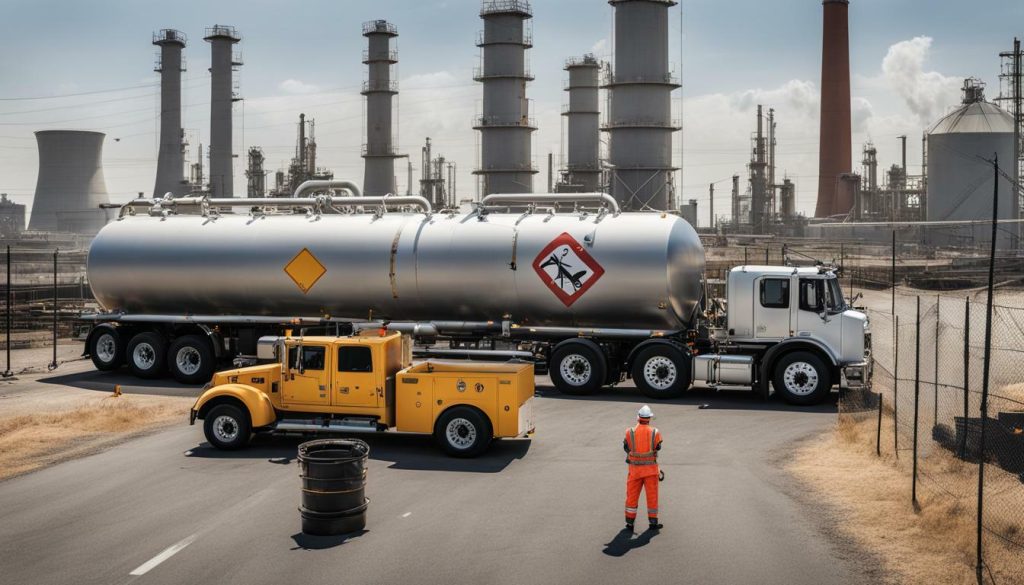
“It’s important that you familiarize yourself with these regulations and guidelines to ensure that you are in compliance and that your transportation of hazardous materials is done safely and legally.”
Permit Application Process
Securing hazardous materials transportation permits involves a detailed and structured process that you must follow. You can apply for permits through the Pipeline and Hazardous Materials Safety Administration (PHMSA), the Federal Aviation Administration (FAA), or the Federal Motor Carrier Safety Administration (FMCSA). Each of these agencies has specific requirements that you must meet when submitting your permit application.
The permit application process involves providing necessary information about the transporter, the type and quantity of hazardous materials being transported, the route taken, and other details. Before submitting the permit application, you must ensure that all the required documentation is in order. This may include training certificates, shipping papers, and emergency response information.
| Permit Issuance Criteria | Details |
|---|---|
| Training Requirements | You must ensure that all personnel who will be handling hazardous materials have received adequate training. This includes training on spill response, emergency procedures, and proper labeling and packaging of hazardous materials. |
| Vehicle and Equipment Safety | All vehicles and equipment that will be used to transport hazardous materials must meet specific safety standards. This includes requirements for proper labeling, placarding, and packaging of hazardous materials. |
| Emergency Response Plan | You must have an emergency response plan in place that outlines procedures for handling spills, accidents, and other emergencies that may arise during transportation. |
It is important to note that your application may be rejected if you do not meet all the criteria for permit issuance. To avoid delays in your application process, ensure that you have met all the requirements and have provided all the necessary documentation.
Once you have submitted your application, it may take several weeks for it to be processed and for you to receive your permit. During this time, you should ensure that all safety measures are in place and that you are fully prepared to transport hazardous materials in compliance with regulations.

Understanding Transport Permit Requirements
In order to obtain a permit for the transportation of hazardous substances, it is important to understand the specific requirements and documentation needed to ensure compliance with regulations. The Federal Motor Carrier Safety Administration (FMCSA) is the main governing body responsible for overseeing the transport of hazardous materials and enforcing regulations.
Transport permit requirements may vary depending on the type of hazardous substance being transported and the mode of transportation. In general, documentation such as shipping papers, emergency response information, and a written safety plan may be required.
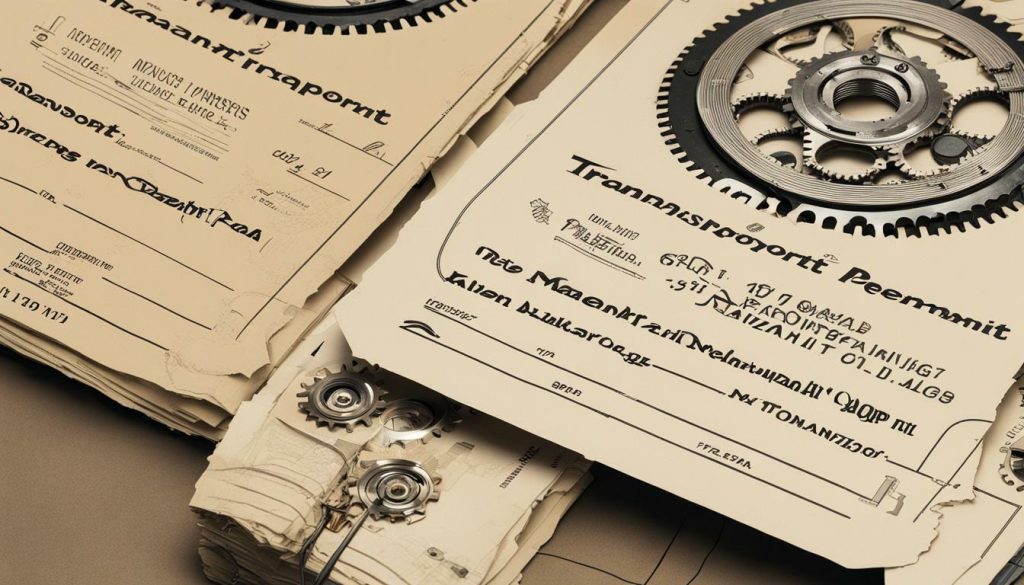
It is important to note that proper training for all personnel involved in the transport of hazardous materials is mandatory. This includes training on the proper use of equipment and handling of hazardous materials, as well as emergency response procedures in the event of an accident or spill.
If you are unsure about the specific requirements for a transport permit for a particular hazardous substance, the FMCSA provides a Hazardous Materials Regulations Handbook which contains detailed information and guidelines.
Overall, it is crucial to ensure that you have all the necessary documentation and training required for the transport of hazardous substances. Failure to comply with regulations can result in hefty fines and, more importantly, pose a serious threat to public safety.
Tips for a Successful Permit Application
To ensure a successful permit application, it’s crucial to follow the correct permit application process. Here’s a helpful checklist of important considerations to keep in mind:
- Identify the type of hazardous materials being transported
- Ensure all required documentation is complete and accurate
- Ensure all personnel involved in the transport have received proper training
- Ensure all necessary safety measures are in place
- Verify that the transport vehicle meets all regulatory requirements
Additionally, it’s important to be aware of common pitfalls that could delay or even result in the rejection of a permit application. Some of these include:
- Incomplete or inaccurate documentation
- Insufficient training for personnel involved in the transport
- Inadequate safety measures
- Not allowing enough time for the application to be processed
By keeping these tips in mind and carefully following the permit application process, you can increase the chances of a successful permit application and ensure the safe transport of hazardous materials.
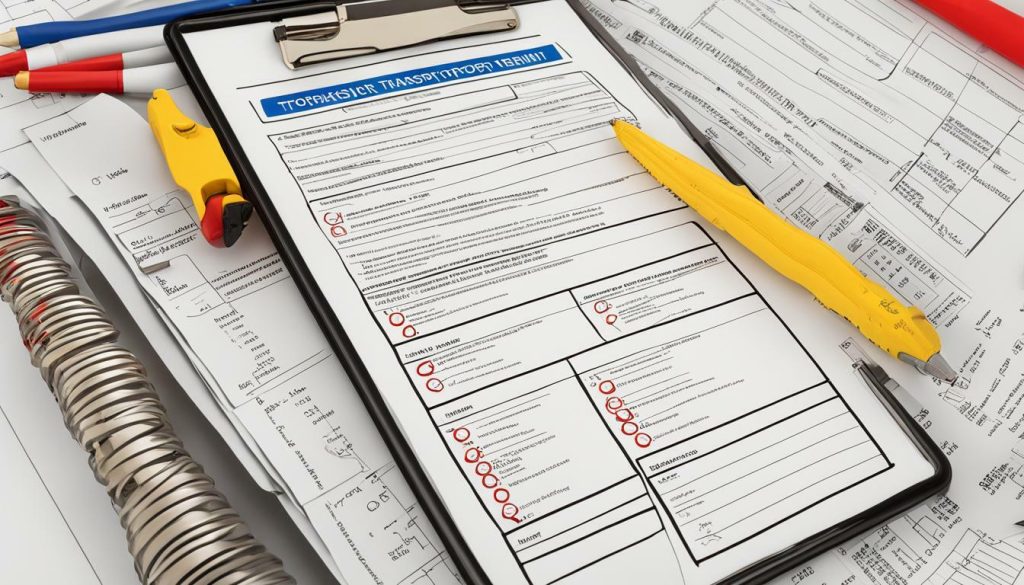
Expert Guidance on Compliance and Safety
When it comes to transporting hazardous materials, safety and compliance are of utmost importance. You must follow the hazardous materials regulations and guidelines to mitigate the risk of accidents and ensure the safety of everyone involved.
Here are some expert tips to help you maintain compliance and safety:
- Regular training: Make sure all employees involved in transporting hazardous materials are trained and up-to-date on regulations, guidelines, and safety procedures.
- Proper labeling and packaging: Label each shipment correctly with all required information and ensure that the packaging meets regulations and guidelines.
- Vehicle inspections: Conduct regular inspections of the transportation vehicle to identify any issues that could lead to accidents.
- Emergency response planning: Have an emergency response plan in place in case of any accidents or incidents. Make sure all employees involved know how to respond.
By following these guidelines and maintaining compliance, you can help ensure the safe transportation of hazardous materials and avoid penalties for non-compliance.
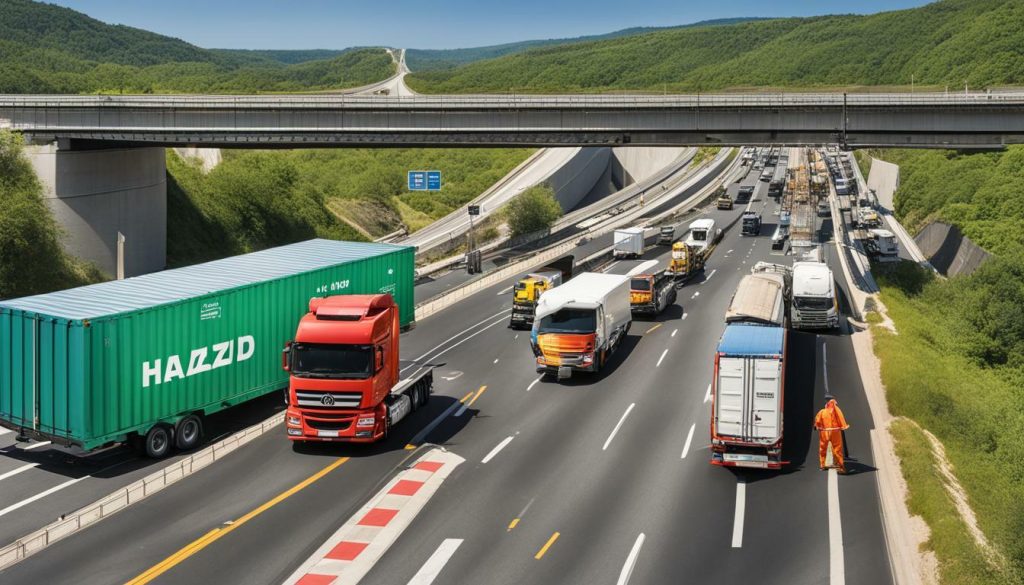
Resources for Further Assistance
Securing hazardous materials transport permits can be a complex process, but you don’t have to navigate it alone. There are various resources available to provide additional information and assistance regarding hazardous materials transport permits.
- Federal Motor Carrier Safety Administration (FMCSA) Hazardous Materials Division – The FMCSA provides regulatory oversight for trucks and buses transporting hazardous materials in the United States. Their website offers detailed information on regulations, guidelines, and permit application procedures.
- Pipeline and Hazardous Materials Safety Administration (PHMSA) – The PHMSA is responsible for ensuring the safe and secure movement of hazardous materials to industry and consumers by all transportation modes, including pipelines. Their website provides a wealth of resources on regulations, permits, and training.
- Environmental Protection Agency (EPA) – The EPA’s hazardous waste transportation program regulates the transport of hazardous waste. Their website offers information on hazardous waste transporter permits.
Industry associations and private companies also offer resources and support for hazardous materials transport permits. For example, the National Association of Chemical Distributors (NACD) provides guidance and training on hazardous materials transportation compliance, and the Hazmat School offers online courses and resources on regulations, permits, and safety measures.
Remember, securing proper permits for transporting hazardous materials is crucial for ensuring safety and compliance. Take advantage of these resources to help navigate the permitting process and maintain compliance with hazardous materials regulations.
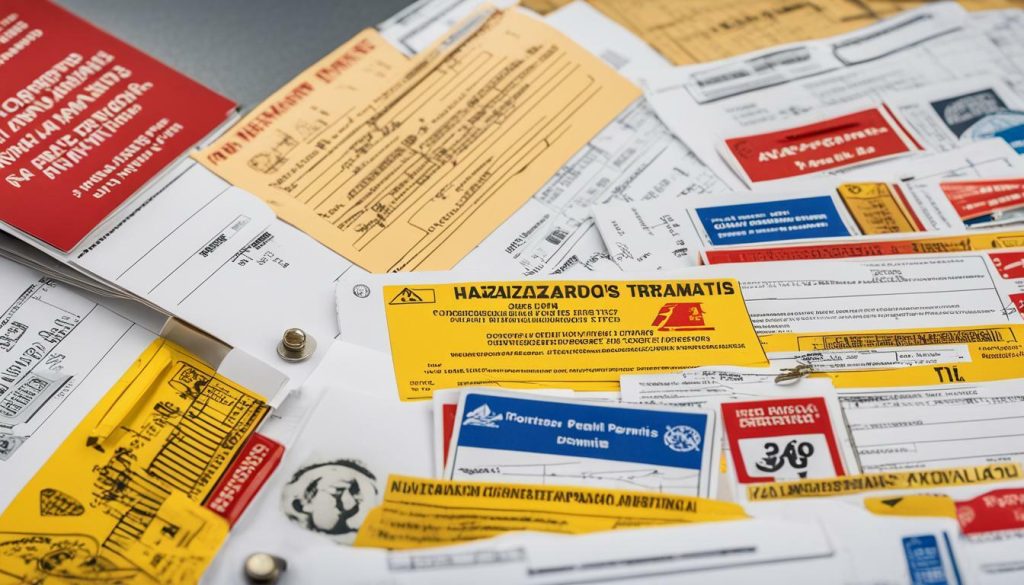
Conclusion
Obtaining hazardous materials transport permits is a crucial step in ensuring the safe transportation of dangerous goods in the United States. Compliance with hazardous materials regulations and guidelines is essential to prevent accidents and protect public health and the environment.
We hope that this article has provided you with valuable information on how to secure hazardous materials transport permits. Remember to carefully follow the permit application process and meet all the requirements for documentations, training, and safety measures.
By putting these tips into practice, you can increase the likelihood of a successful permit application and maintain safety throughout the transportation process.
Take Action
Don’t wait until the last minute to apply for hazardous materials transport permits. Start the process as soon as possible to ensure that you have enough time to meet all the requirements and obtain the necessary permits.
Remember, safety should always be the top priority when transporting hazardous materials. By obtaining the proper permits and following regulations and guidelines, you can help prevent accidents and protect your business, employees, and community.
Thank you for reading this article, and we wish you all the best in your hazardous materials transportation endeavors.
FAQ
Q: How do I secure hazardous materials transport permits?
A: To secure hazardous materials transport permits in the US, you need to follow a specific process. This typically involves submitting an application, providing necessary documentation, meeting safety and training requirements, and complying with regulations set by government agencies such as the Department of Transportation.
Q: What are hazardous materials regulations?
A: Hazardous materials regulations are guidelines and rules that govern the transportation of dangerous goods. These regulations outline requirements for packaging, labeling, documentation, training, and safety measures in order to ensure the safe transportation of hazardous materials.
Q: How do I apply for a permit?
A: The permit application process for hazardous materials transportation involves completing an application form, providing details about the materials being transported, submitting supporting documentation, and meeting specific criteria for permit issuance. It is important to carefully follow the instructions provided by the relevant regulatory agencies.
Q: What are the requirements for obtaining a transport permit?
A: To obtain a transport permit for hazardous materials, you will generally need to provide documentation such as a safety plan, training records, emergency response information, and proof of compliance with applicable regulations. Additionally, you may need to demonstrate that you have adequate safety measures in place.
Q: Any tips for a successful permit application?
A: Some tips for a successful permit application include ensuring that all required documentation is complete and accurate, double-checking that all safety measures are in place, adhering to the specified deadlines, and seeking expert guidance if needed. It is also helpful to use a permit application checklist to ensure all requirements are met.
Q: Why is compliance with regulations important for hazardous materials transportation?
A: Compliance with hazardous materials regulations is crucial to ensure the safe transportation of dangerous goods. By following regulations and guidelines, you can minimize the risk of accidents, protect the environment, and safeguard the health and safety of those involved in the transportation process.
Q: Where can I find additional resources for assistance?
A: For further assistance and information on hazardous materials transport permits, hazardous materials regulations, and transport permit requirements, you can refer to government agencies such as the Department of Transportation, industry associations related to your specific field, and online tools that provide guidance and resources.


